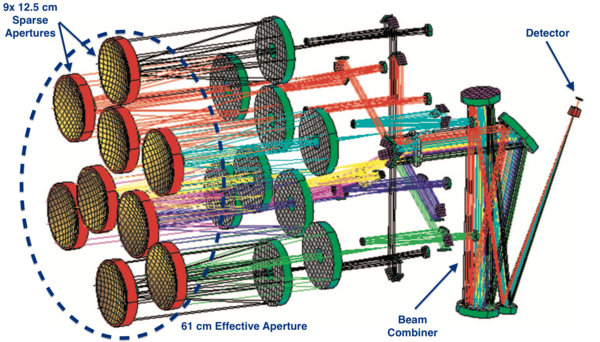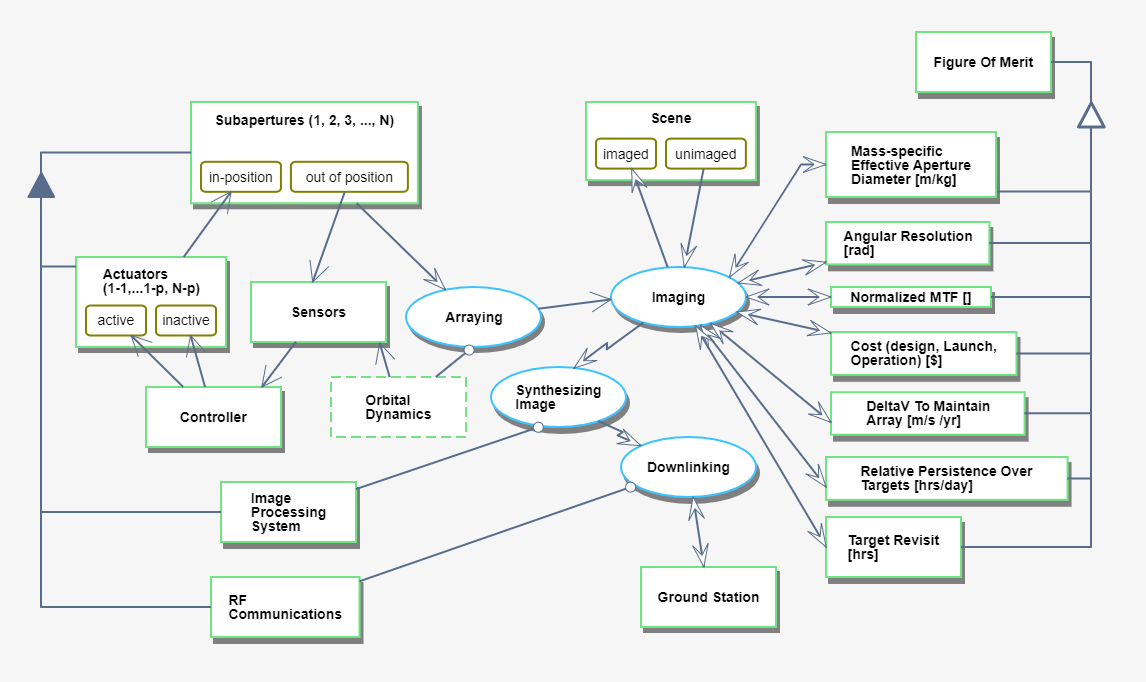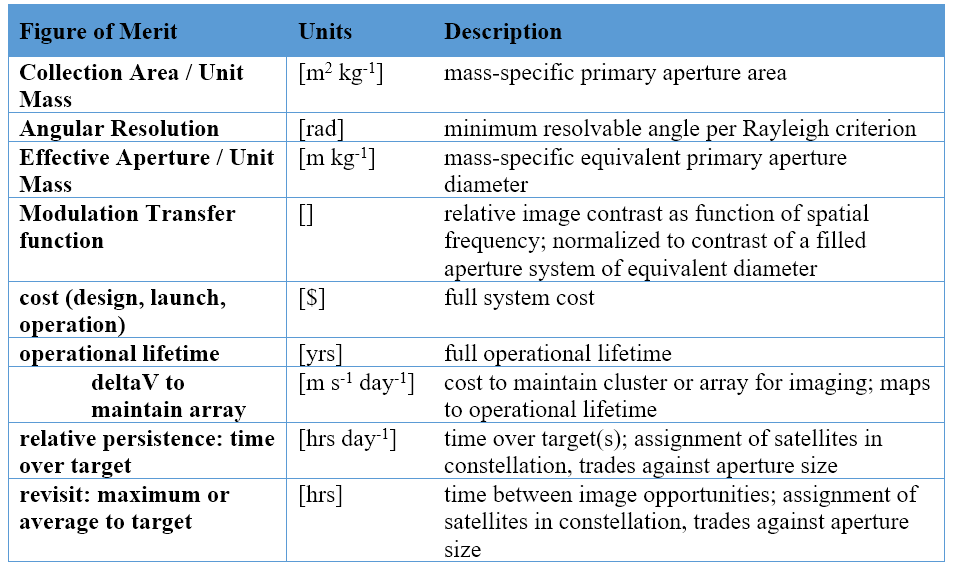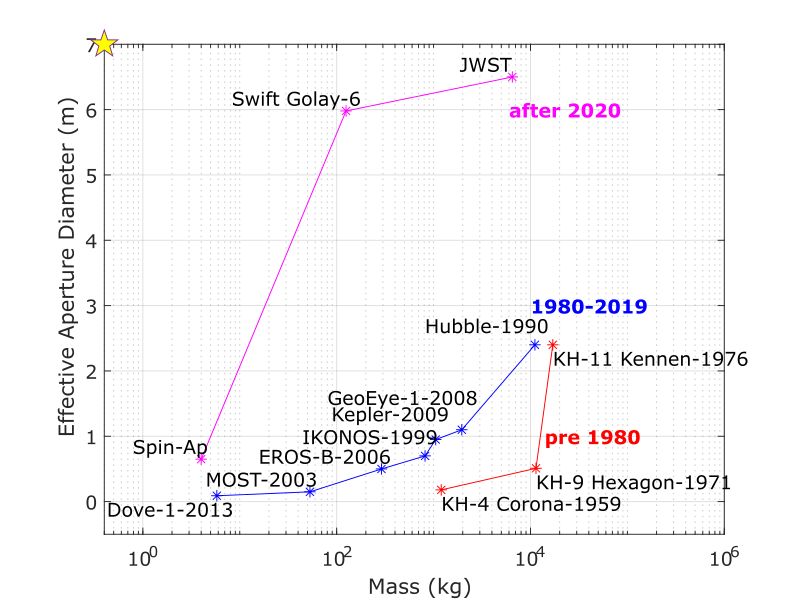Difference between revisions of "Sparse Apertures for Next Generation Optical Space Telescopes"
| Line 23: | Line 23: | ||
== Figures of Merit == | == Figures of Merit == | ||
[[File:Figures of Merit.png | [[File:Figures of Merit.png|FoMs for a Formation-flight Sparse Aperture Space Telescope]] | ||
One key figure of merit is the mass-specific effective aperture. The figure below shows the progression of this figure of merit over time from early Earth-reconnaissance satellites, to the filled-aperture space telescopes in the past 30 years, to the next generation of synthetic aperture systems that extend the pareto front. | |||
[[File:Spacetelescopes2.png|Mass-specific Primary Aperture Diameter of Space Telescopes over Time]] | |||
Revision as of 15:04, 7 October 2019
Technology Roadmap Sections and Deliverables
This technology roadmap is identified as follows:
- 2SASOT - Sparse Aperture Space Optical Telescope
This a Level 2 roadmap that evaluates sparse aperture optical telescopes that can achieve larger effective aperture. This feeds into a Level 1 roadmap for next generation space optical telescopes, which includes separate categories like monolithic or segmented telescopes. A Level 3 roadmap would describe the technological progress required to achieve a particular sparse aperture technique (deployable, formation flying, or erecting on-orbit). A Level 4 roadmap would describe individual enabling technologies such as on-orbit alignment metrology, and precision formation flying control algorithms.
Roadmap Overview
The angular resolution of a telescope is proportional to the size of the aperture. The mass and thus cost of space telescopes increases exponentially with aperture diameter. There is a need for systems that can produce the equivalent of a large aperture with low mass. This can be achieved by creating a synthetic aperture using multiple sub-apertures. One method to achieve this is to create a large number of small spacecraft, flying in a formation that creates the synthetic aperture.
Currently, a sparse aperture space telescope has not yet been fielded. In 2006, Lockheed Martin built a laboratory demonstration of a sparse aperture space telescope, which is depicted in the figure below. Currently, the technology appears be at approximately TRL 4. Research has proven the feasibility of the technology, however, significant technology development must be completed before a space technology demonstration is ready.
DSM Allocation
...
Roadmap OPM Model
Figures of Merit
One key figure of merit is the mass-specific effective aperture. The figure below shows the progression of this figure of merit over time from early Earth-reconnaissance satellites, to the filled-aperture space telescopes in the past 30 years, to the next generation of synthetic aperture systems that extend the pareto front.



